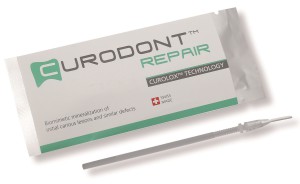Fluid Bed Technology for Coating of Application Devices (Sponges) with a Peptide Formulation

Caries is the most common disease in the world. Great efforts have been undertaken for prevention and to identify a regenerative treatment solution for dental caries, especially for children. Self-assembling β-sheet forming peptides have previously appeared to form 3-dimensional fiber networks supporting tissue regeneration. It has previously been proven that application of monomeric P11-4 solution to early carious lesions can increase net mineral gain by forming de novo hydroxyapatite crystals. The self-assembling synthetic peptide P11-4 diffuses into the subsurface lesion, assembles into higher formed aggregates throughout the whole volume of the lesion, and supports nucleation of de novo hydroxyapatite nanocrystals and consequently results in increased mineral density within the subsurface carious lesion or Guided Enamel Regeneration (GER). The results revealed that one single application of self-assembling peptide P11-4 can facilitate the subsurface regeneration of the enamel lesion by supporting de novo mineralization in a similar mode of action as it has been seen for the natural formation of dental enamel.

Poster by Glatt Pharmaceutical Services and Credentis AG presented @
9th Conference of the European Paediatric Formulation Initiative


